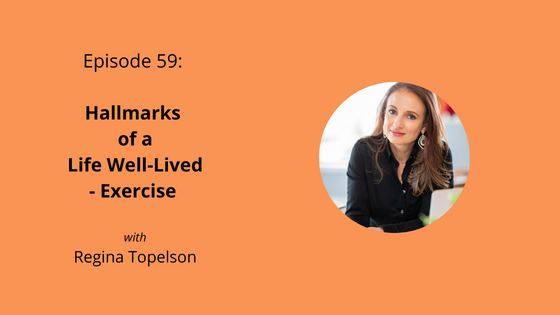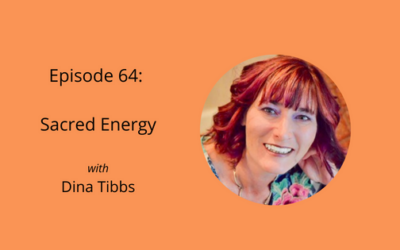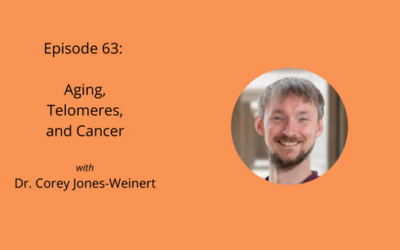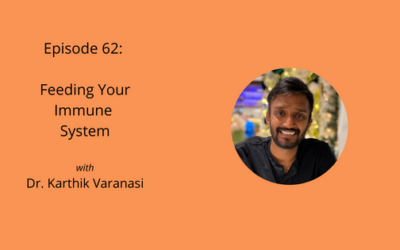This episode is about the hallmarks of a life well-lived, part 2 – exercise. The first hallmark of a life well-lived is a healthy dietary pattern that supports health and well-being. I discussed the benefits of a healthy dietary pattern in last week’s episode, number 58. It’s information that stands on its own, so you can go back and listen to it any time!
This week I’m presenting the evidence for the gifts of physical fitness. Because it’s more than just exercising, it’s about moving your body in ways that bring you joy and bring you strength.
What is physical fitness?
Physical fitness is the ability to perform physical activity. Being physically fit is not about body image. It’s not about being under- or overweight. Being physically fit is about having the strength to do things in life. What kinds of things? Walking up the stairs in your house without feeling winded. Taking a walk with your partner or animal(s). Swimming, running, biking, hiking, dancing, or anything else you like to do.
Being physically fit makes your heart stronger, your muscles stronger and more muscular, it gives you the ability to do what you like longer and makes you more flexible.
Being physically active (exercising) is good for you on so many levels!
When you’re physically active, everything in your body works better. Your digestive system moves things along, and your muscles are better able to support your skeleton – keeping you upright instead of hunched over, I’ve already mentioned it’s good for your heart, and it’s also good for your brain. Exercise is good for your mental faculties, it helps you think sharper, retain information better, and improves your mood.
Physical activity lowers bad cholesterol, increases good cholesterol, and lowers blood pressure. Because your heart is a muscle, exercise helps your heart function more efficiently even while at rest. Exercise also helps you use oxygen more efficiently, good for a healthy immune system. It also helps you “keep things moving”, protecting you from constipation and hence, diverticulitis, and may protect against colon cancer. Physical inactivity is an independent risk factor for developing breast cancer (but we’ll come back to that later).
Physical activity regulates blood sugar and helps you avoid insulin resistance. It keeps your skin from sagging and helps you maintain a nice figure, which helps with body image. Exercise improves your reaction to stress. Exercising can help women with reproductive health with things like regulating periods, regular ovulation, and fertility. But too much exercise can be detrimental to both men and women so think moderate intensity most of the time with high intensity sprinkled in between.
Did I mention it improves sleep?! What I love about the human body is that everything works in coordination. When you do something that benefits one part of the body, it usually has a positive effect on other parts of the body too.
So when I mentioned that exercise decreases stress and helps you manage anxiety, those things in turn, help you sleep better. And while you’re sleeping, the brain produces a chemical similar to “miracle gro” for the brain. Researchers at the Dana Farber Cancer Center found that this chemical, effects fatty tissue in the body and controls calories stored and obesity.
Now, remember from the last episode where I talked about the AICR recommendations for reducing risk of developing cancer and one of them was to maintain a healthy weight. This is one way in which exercise can help you do that by acting directly on the brain.
Physical activity (exercise) keeps you younger, longer.
Researchers have found that muscles release a chemical that protects the telomeres that protect your DNA. DNA is your genetic information and telomeres are like the plastic at the ends of a shoelace that keep your DNA safe and from unraveling. As you age your telomeres get shorter and increase your risk of developing cancer and many other conditions. Engaging in physical activity keeps your telomeres longer the result of which is you looking younger and being younger on the inside.
Need another good reason to exercise?
You may not love the gym, but your brain does. When you exercise your brain releases many chemicals that leave you happy. What are these chemicals? I’m talking about dopamine, serotonin, brain-derived neurotrophic factor, and of course, endorphins! So if you want to be happier, go for a run, a ride, a swim, or dance it out in your living room. Just do it!
Exercise as medicine.
Let’s get down to business. Exercise has been found to be an independent risk factor for developing breast cancer, and maybe colorectal cancer. That means that even if you are thin, not overweight, but have a sedentary lifestyle in which you don’t move very much, you still have an increased risk of developing cancer. Independent of healthy diet, stress reduction, and all other factors being equal.
For breast cancer specifically, regular exercise can help to regulate hormone levels. Physical activity also regulates blood sugar and insulin levels, and helps to regulate weight. One of AICR’s 10 Recommendations for Cancer Prevention is to be physically active at least 30 minutes five times per week. And the great news is that you get to choose what type of physical activity you engage in.
If you haven’t been active in a while, start slow and build-up (go longer, stronger) as you feel comfortable. A brisk walk 30 minutes a day is enough to get started. If you don’t like running that’s okay. Try dancing, pilates, barre, strength training (also start light), or tai chi, chi gong, or yoga for balance. If you decide to do some strength training, start out twice a week on non-consecutive days and work different parts of your body to avoid injury.
Sometimes you might feel bored, but just like meditation, keep coming back because moving past the boredom is part of the process. Life isn’t always exciting. We want it to be because social media has conditioned us to think that it should be, but the reality is that many things in life are just part of life and as you keep coming back to the same task, exercise, over time you may find new insights.
Exercise for weight loss.
Many times losing just 5-10% of your weight if you are overweight or obese can do a world of good in terms of heart disease, diabetes, and cancer prevention. Even a small amount of moderate-intensity exercise can be a huge benefit. Many times the people who see the most benefit are those who were sedentary and started doing something.
A new study is showing that diet alone may not be enough even if you’re trying to hack your diet with things like intermittent fasting. Some people just lose weight slower than others. A recent randomized controlled trial showed that for women who had difficulty losing weight on a calorie-restricted diet (and who doesn’t love restricting calories?) the incorporation of exercise helped them decrease fat mass and improve skeletal muscle function. The bottom line of this study is that different people respond differently to diet and exercise. When you feel you’ve plateaued, consider changing up your routine by either adding exercise or changing the type or intensity depending on what you’ve already been doing.
Exercise and injury prevention.
To prevent injury, follow these guidelines:
- Warm up with a stretch.
- Start low and go slow. This is not a race.
- Cool down at a slower pace.
- Finish with more stretching.
Use the FITT model to track your fitness.
FITT stands for frequency, intensity, time, and type.
We’ve already talked about frequency – 3- 5 days a week. Intensity of moderate intensity 5 days or vigorous intensity 3 days of the week. Or you could do a combination like vigorous intensity 3 days and moderate intensity two days sprinkled in between the vigorous days. You can figure out your maximum intensity by subtracting your current age from 220. That will be your maximum heart rate. Moderate intensity should be 65-75% of that number, vigorous activity 76-90% of that number. It’s okay to get to 100%, just don’t stay at that level for more than a few minutes. Some people use the talking test. If you can sing or speak normally you’re not working hard enough. If you can’t speak at all, you’re probably working too hard.
Time, we also talked about. A good time to strive for is 30-60 minutes of moderate activity or the same amount for vigorous activity, less frequently. For example, when I go for a bike ride, it might be for several hours at a time, but the intensity varies during that time. Or I might go for an hour walk or a 30-minute run.
This is where the Type of exercise matters. If you’re doing something more strenuous you could do it for less time or something less strenuous for a longer time. What you do is entirely up to you and the types of activities that are appealing to you. If you’re not interested in a type of activity don’t do it, do something else.
References:
Exercise training enhances muscle mitochondrial metabolism in diet-resistant obesity. Chantal A. Pileggi, Denis P. Blondin, Breana G. Hooks, Gaganvir Parmar, Irina Alecu, David A. Patten, et al. Open AccessPublished:August 11, 2022 DOI:https://doi.org/10.1016/j.ebiom.2022.104192 https://www.thelancet.com/journals/ebiom/article/PIIS2352-3964(22)00373-5/fulltext
Here are some of my favorite moments from this episode:
- 3:07 What is physical fitness?
- 4:35 Reasons to be physically fit.
- 7:27 How exercise benefits the brain.
- 8:20 How exercise keeps you younger, longer.
- 10:05 Exercise as medicine.
- 12:42 Moving past the boredom of exercise.
- 14:55 Exercise for weight loss.
- 16:40 Exercise and injury prevention.
- 17:08 The FITT Model.
- 18:28 How to know if you’re working out at optimal heart rate.
Links mentioned in this episode:
Subscribe & Review in iTunes
Not subscribed to the podcast yet? Subscribe today so you don’t miss out on upcoming new content! Trust me, this is stuff you’re not gonna wanna miss! Don’t know how to review a podcast? Check out this article I wrote about rating and reviewing a podcast.
Want more?
If you’re stressed about what to eat check out episode 34 with Cathy Leman, RD, or episode 35 where I talk about food rules vs. food values. Episode 19 and episode 30 were about balancing components of an anti-cancer lifestyle. Episodes 25, 31, and 32 were about helping you find ways to heal your soul through Reiki and healing touch, writing, and art therapy. Funny episode 16 with Dr. Shari Fox.
Spread the love!
Share this blog, podcast, or email musings with your friends and family.









